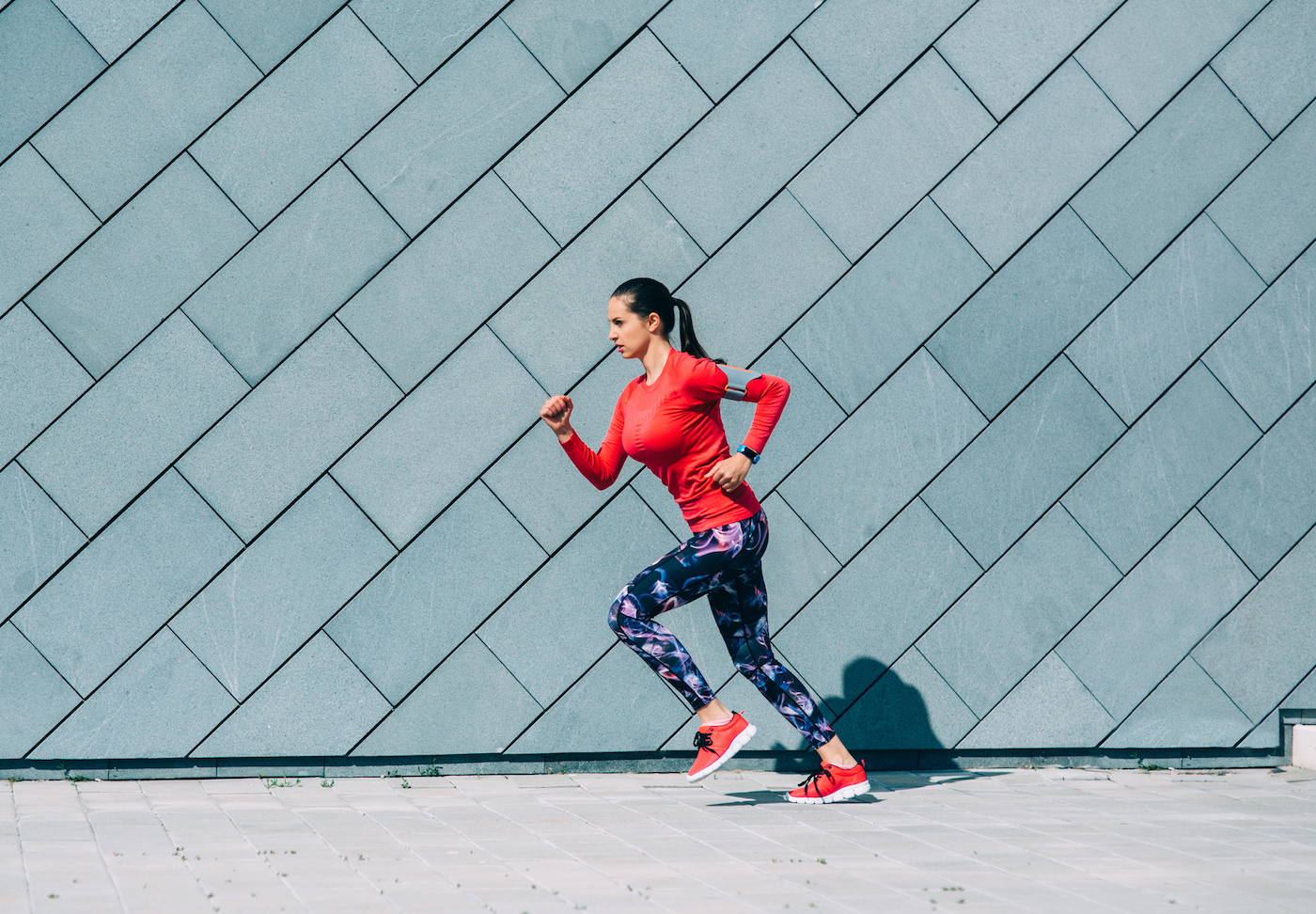
March 11, 2020 at 01:00AM by CWC
There are infinite reasons why people run, but in terms of getting the miles marked off, it’s a fairly simple strategy: One foot in front of the other. While most people tend to have the same form while running, there are some variations. Some people heel strike, others are mid-foot runners, and there are even those who find themselves running on their toes.
According to Juan Delgado, a sports scientist and bio-mechanist with New York Sports Science Lab, roughly 80 percent of runners are rear-foot runners (AKA heel strikers), while 15 percent are midfoot runners, and the rest are forefoot runners. If you’re in the special group that toe runs, you’re going to have more power when you’re hitting the pavement.
Forefoot or toe running involves contacting the ground with the ball of your foot, or your metatarsals, while your heel contacts the ground afterwards, explains Delgado. “It’s mostly used when long distance or faster speeds are needed because the faster you get, the more difficult it is to actually heel strike,” he says. The opposite running form, or heel running, slows you down. “When you heel-strike, you’re essentially braking against your body’s momentum,” says Steve Stonehouse, a coach and director of education for Stride. “You’re forcing your body to work harder than it has to. Mid-foot and toe-strike running allows your body to use the force and momentum that you’re creating to your advantage.” This is because if you’re landing in the front of your foot—or on your toes—you’re on the ground for less time, which gives you the benefit of increased speed.
“Forefoot strikers tend to have more power and recruit more muscles, most commonly their hamstrings, and they peel off of the ground quicker,” says Meghan Takacs, trainer and founder of fitness app #RunWithMeg, who points out that toe runners tend to avoid injury more than heel-strikers (because they have less contact with the ground). “The shock absorption in your stride cycle is much more powerful with a toe strike, and your posture is more aligned.”
Is toe running right for me?
This all isn’t to say that toe running is the best way to run. Trainers actually don’t believe that one foot strike is better than another. “Heel striking isn’t necessarily bad for you. Your foot placement in relation to your hips is actually what is most important,” says Takacs. “You want to land directly under your center of mass, which is your hips, whichever part of your foot that you’re striking with.” In fact, she points out that toe strikers won’t land in front of their hips as much as heel-to-toe strikers do.
Heel strikers are likely the most common type of runner, which is fine, but does come with risks of injury. “Heel to toe tends to put more pressure on your knees and shins, making you a little more susceptible to injuries like shin splints and IT band issues,” says Takacs. But toe runners have their own risks, too. “If you are a toe runner, it places a higher load on your Achilles tendon and your toes,” says Delgado.
If you’re fine with the way you currently run, he recommends sticking with it. If you’re looking to give toe running a go, though, there are certain exercises you can do to train your stride. Just be sure to not rush into it: “Be conservative, start slow, and ice and massage your muscles regularly,” Stonehouse advises.
Exercises that help with toe running
1. Jump rope: Start doing this as a warm-up or on your recovery days. “This exercise is great for training your body and your mind to stay up on your toes,” says Stonehouse, who recommends doing it for 60 seconds without stopping, and gradually increasing. “Feel free to change up your foot position while you’re jumping,” he says.
2. Roll your feet: When you start transitioning to toe running, your feet are going to be sore. “Because of this, I’d recommend rolling your feet over something like a golf ball as a massage,” says Stonehouse. “You could also freeze a water bottle and roll your foot over the top of it.”
3. Walk around barefoot: Delgado suggests walking around your house barefoot so that you get used to how the ground feels underneath your feet as you move. Do this before gradually working your way up to short runs outside.
4. Do dynamic warm-ups: “Warm up with dynamic warm-ups instead of static stretching,” says Tekacs. Delgado adds that this will get your blood circulating and reduce muscle tightness before you get into your run.
5. Work on foot flexibility: Having toe and foot flexibility helps, too. “This helps you avoid having toe weakness or joint stress,” says Delgado, who suggests trying to scrunch up a towel with your toes while keeping the arch as close to the ground as possible. “You can also place a pen underneath your toes and a coin underneath the big toe, and lift the big toe while keeping the rest of your toes on the ground, holding the pen in place.” Then you’ll be a toe-striking speed racer in no time.
To get you going, here’s a roundup of interval running workouts. And these are the recovery for runner tips you should know about to stay nimble.
Author Rachel Lapidos | Well and Good
Selected by CWC

ADVERTISEMENT
ADVERTISEMENTUp to 30% off Gift Sets |








